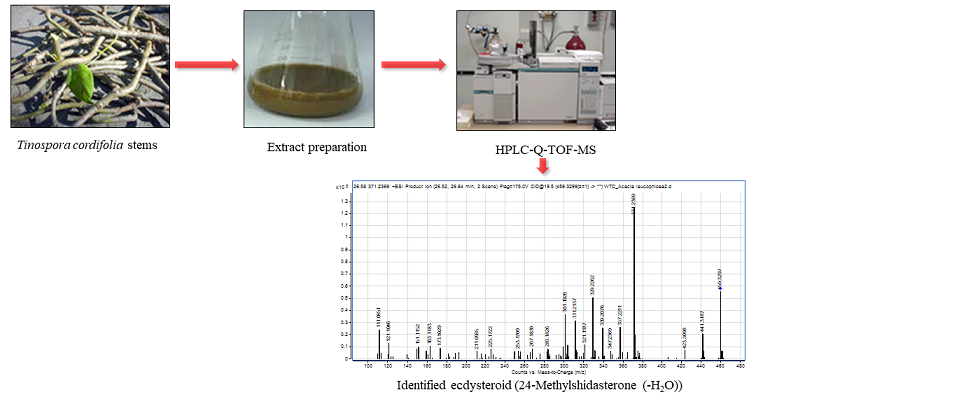Higher plants exert interspecific effects on the phytoecdysteroids contents in Tinospora cordifolia

Keywords:
Phytoecdysteroids, Tinospora cordifolia, HPLC-QTOF-MS, A. nilotica, A. lebbeck, plant steroids, plant metabolites, metabolite characterizationAbstract
Phytoecdysteroids are known for anabolic and adaptogenic properties. Hence, these are the point of interest in sports medicine and the pharmaceutical industry. Phytoecdysteroid occurrence varies in different plant parts, and also due to seasons and geographical locations. However, variations due to interspecific interactions of plants have not been explored to date. Tinospora cordifolia has been reported to contain some phytoecdysteroids and is known to have anabolic and rejuvenating properties. Hence, the effect of interspecific interactions on phytoecdysteroid contents was explored in the current study using HPLC-QTOF-MS. Initial analysis of mass data based on characteristic fragment ions and loss of multiple water molecules validated the presence of 10 phytoecdysteroids and 4 derivatives across the samples screened. Principle component analysis (PCA) and partial least square discriminant analysis (PLS-DA) analysis showed significant (p>0,05) variations in phytoecdysteroid patterns due to interspecific interactions. Statistical analysis revealed that T. cordifolia having interactions with A. lebbeck and A. nilotica formed separate distant groups, whereas. T. cordifolia having interactions with A. indica is the most distant group among other groups. T. cordifolia co-occurred with A. indica showed the highest number of up-regulated phytoecdysteroids, Fold change analysis showed that interspecific interactions of T. cordifolia with A. indica increased the contents of 3-dehydroecdysone (2-fold), makisterone A (4.8-fold), 24-methylshidasterone (4.3-fold), 1-hydroxy-20,22-didehydroxysterone (2-fold), 1-hydroxy-22-deoxy-20,21-dehydroecdysone (2-fold), cycleasterone A(3.3-fold), and 3β,5α,14α-trihydroxyergosta-7,22-diene-6-one (2.5-fold) in comparison to other plants. Hence, study indicate the interspecific interactions with T. cordifolia change the phytoecdysteroids pattern, hence its medicinal properties.



